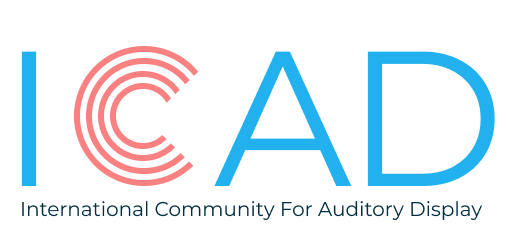Winner of the ICAD 2022 Best Use of Sound Award
So, who are you?

I am an Assistant Professor in Digital Arts at Trinity College Dublin (TCD) where I was awarded my Ph.D. entitled ‘Embodied Sonification’, in 2016. My current work is focused on the application of sonification, and artificial intelligence/machine learning techniques (AI/ML) in human-computer interaction (HCI) and the creative arts. My previous postdoctoral research was based at the CONNECT Centre in TCD and funded by an IRC postdoctoral fellowship. It explored the design of sonification and auditory display solutions for large-scale internet of things (IoT) networks. My research is multidisciplinary in nature, and alongside my traditional research activities, I maintain a vibrant creative arts practice in which sonification and data-driven music are key components.
How did you end up working on Sonification and Auditory Displays?
While pursuing an undergraduate degree in Music Media and Performance Technologies at the University of Limerick, I was exposed to sonification and auditory display through Mikael Fernström’s Human-Computer Interaction module. The idea of converting data to sound in order to communicate information caught my imagination. Gaver’s ‘Sonic Finder’, parameterized auditory icons, and the question of what constitutes an effective data to sound mapping strategy were of particular interest to me.
What is the role of Sonification/Auditory Display in your research?
Sonification is a core focus of my research and I’m especially interested in the Mapping Problem. When I’m not trying to find more effective sonic dimensions along which to map a given data set, I’m usually trying to integrate some form of generative system to create richer mapping strategies. The rest of the time I’m using sonification techniques to create music and art.
What is the most challenging part in your work?
Auditory Display is a diverse multidisciplinary field that encompasses a wide range of sub-fields. While I like this multidisciplinary setting, it can sometimes be difficult to keep pace with the breadth of developments happening across fields as diverse as psychology, signal processing, and sound art. While this is a strength of the field, I find it can make things a little more challenging.
Anything special ICADders should know about you?
ICAD has been massively important to me. It provided a friendly and supportive community of like-minded individuals from a wide range of scholarly and creative backgrounds who provided critical insights to me during my PhD process and postdoctoral years. It continues to be an exciting venue for learning about cutting-edge auditory display research and creative projects.
What would you like to say to ICADders?
I’d like to say thanks for existing. Research and music aside, I’ve made many great friends through ICAD and I think that independent research communities like this are critically important to the development of multidisciplinary/interdisciplinary research fields.
What is your favorite sonificaton/auditory display ever?
Robert Alexander’s Solar Wind Sonification showed me how an expanded approach to sound, music, and sonification could in fact enhance a listener’s understanding of the patterns represented in the data.
https://www.youtube.com/watch?v=2b9ykhYzw6k
Any What is the study/tool/work in the field of auditory display you are most proud of?
One of my favorite pieces of my own work is a design I made for IoT network monitoring with my collaborator Brian Bridges. You can read about the design and hear the final audio in the paper for the Journal of Sonic Studies. I especially like this paper as it is presented in an online format with audio embedded in the document! https://www.researchcatalogue.net/view/515156/515157
Any way to learn more about your work or reach out to you?
If you’re interested in collaborating or just talking about sonification, drop me a line at stephen.roddy@tcd.ie or find me online at www.stephenroddy.com and finally twitter.com/stephenroddy
